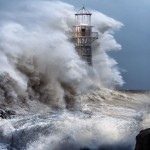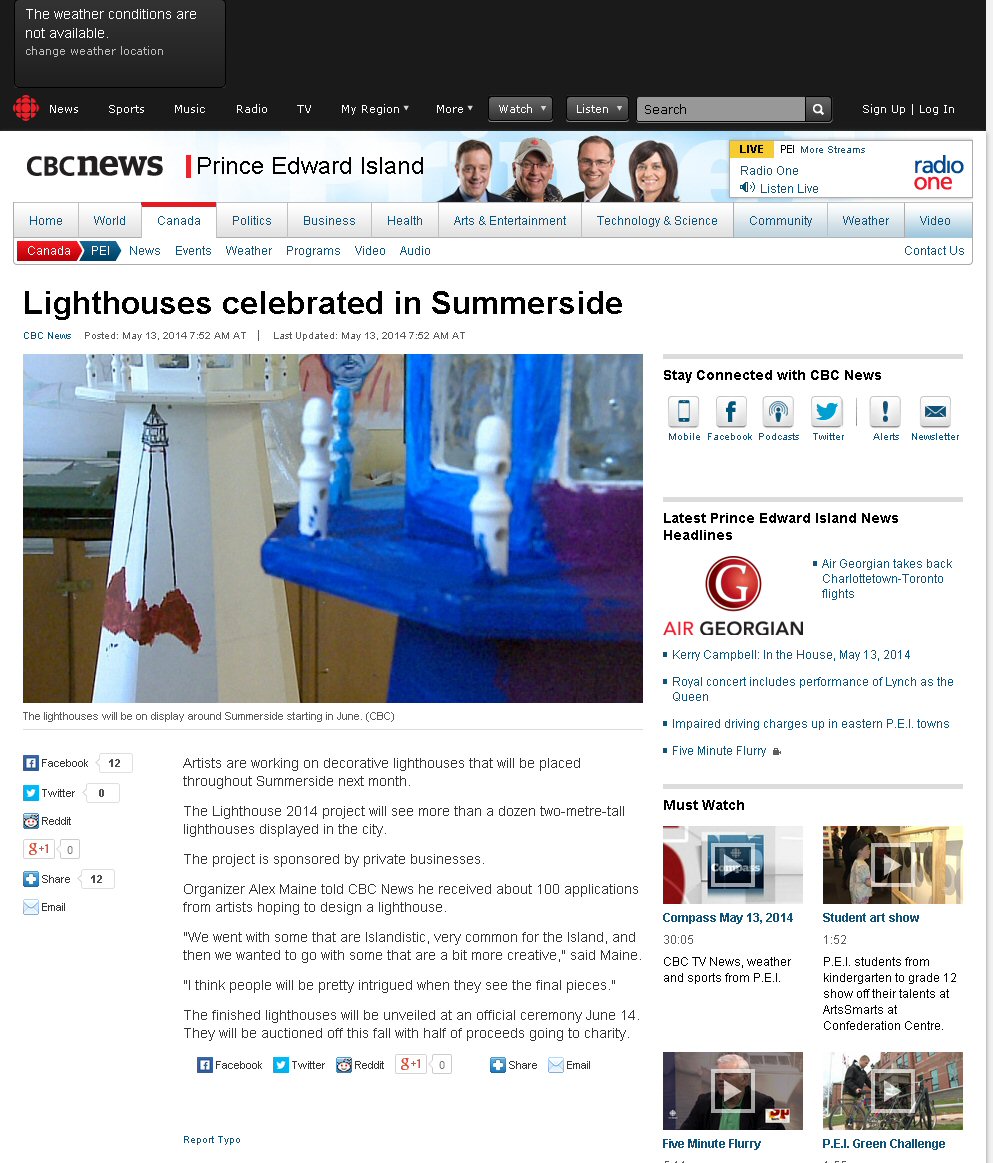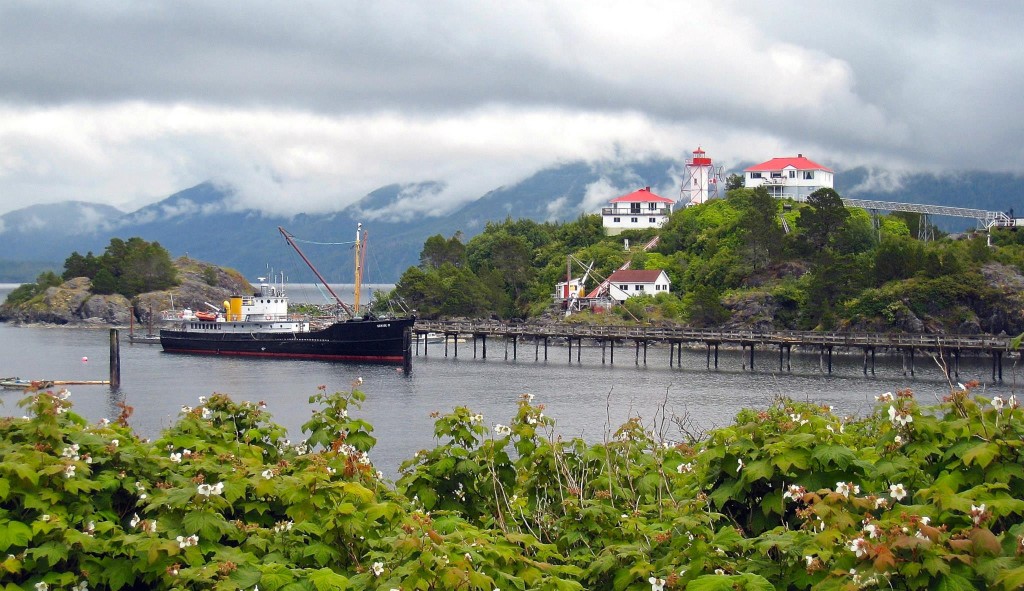 Facebook (FB) is a great place for finding lighthouse photos, and many marine related sites such as West Coast Fisherman are also a big help. Yesterday a man I had never met before posted the photos above and below. Please give many thanks to Gordon Tolman for the photos of the MV Uchuck III with a background of the Nootka lighthouse. Continue reading Nootka Island
Facebook (FB) is a great place for finding lighthouse photos, and many marine related sites such as West Coast Fisherman are also a big help. Yesterday a man I had never met before posted the photos above and below. Please give many thanks to Gordon Tolman for the photos of the MV Uchuck III with a background of the Nootka lighthouse. Continue reading Nootka Island
Category Archives: Recreation
Mise Tales Forty-Six
For an update on what a Mise Tale is then please see Mise Tales One.
As mentioned earlier on the front page of my website, any photos or cartoons, or short bits of information, when it is removed from the front page, will also be included again later in the next next Misc Tales posting. That way you can keep track of it, search for it, or copy it.
************************************
The Lightkeeper’s Wife – Sarah Johnson’s salty debut novel, The Lightkeeper’s Wife, is everything historical fiction should be: an ode to a simpler period and place (in this case, 19th century Cape Cod), while complicating issues that are relevant today – making and breaking gender and sexual norms. – see more
Lady pirates & lighthouse keepers cross paths in Provincetown writer’s new novel
**************************************
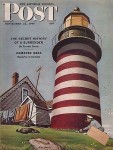 Are you into collecting lighthouse memorabilia?
Are you into collecting lighthouse memorabilia?
Here’s the September 22, 1945 issue of the “Saturday Evening Post,” featuring West Quoddy Lighthouse. It’s for sale on Amazon. – as mentioned by Elinor DeWire on Facebook
******************************************
Interesting reading – The Lighthouse of Strombolicchio in Italy http://www.amusingplanet.com/2014/09/the-lighthouse-of-strombolicchio.html
******************************************
28 Breathtaking Photos Of Lighthouses That Have Stood The Test Of Time – the title explains it all – wonderful photography, beautiful lighthouses worldwide!
***************************************
 Great Bear Wild is a photo and movie documentary about the undersea life that controls the Great Bear Rainforest on the west coast of British Columbia, Canada.It explains why we must keep this part of our coast pollution free.
Great Bear Wild is a photo and movie documentary about the undersea life that controls the Great Bear Rainforest on the west coast of British Columbia, Canada.It explains why we must keep this part of our coast pollution free.
Mise Tales Forty-Two
For an update on what a Mise Tale is then please see Mise Tales One. As mentioned earlier on the front page of my website, any photos or cartoons, or short bits of information, when it is removed from the front page, will also be included again later in the next Misc Tales. That way you can keep track of it, search for it, or copy it.
*****************************
– Andrew Hirst Monday, April 14, 2014

For centuries it served as a beacon of security, offering safe passage for thousands of seafarers.
Now, as the sea it once guarded over grows perilously close, the end of Orfordness Lighthouse looms near.
But before the iconic landmark is lost to the waves, a final chance to view it in all its glory has been made possible. . . more
To inquire about visiting email orfordnesslighthouse@gmail.com. Continue reading Mise Tales Forty-Two
Celebrating the Lighthouses of PEI
Dreams of Being a Lighthouse Keeper
For years past, adults and children of all ages had dreams of growing up to be an adventurous lighthouse keeper. That dream is slowly dimming as the world automates its lighthouses.
The following article from The Guardian brings to our attention the dimming of the dream in the UK
The lure of the lighthouse for our islanded souls
With the last lights set to go out, many of us will miss these concrete symbols of our humanity
by Joe Moran The Guardian, Saturday 12 April 2014.

Growing up, I wanted to be a lighthouse keeper. Just like Moominpappa in Tove Jansson’s Moomin books, my ambition was to live on the loneliest lighthouse on the remotest skerry farthest from land. It didn’t end well for Moominpappa, the island he and the other Moomins settled on being barren and desolate, inhabited only by a silent fisherman who turned out to be the ex-lighthouse keeper driven mad by loneliness. It didn’t put me off.
I have since met many compatriots who have had the same dream, for there is something about lighthouses that seems to speak to our islanded souls. more . . .
[private]
Now, to celebrate the quincentenary of Trinity House, the organisation responsible for the lighthouses of England and Wales, an exhibition is opening at the National Maritime Museum. Guiding Lights will display intricate models of lighthouses and lighthouse keepers’ personal effects. It is hard to imagine a similarly pulse-quickening exhibition about air-traffic controllers or road-safety officers, although our lives are similarly in their hands.
“I meant nothing by the lighthouse,” Virginia Woolf wrote of its role in her most celebrated novel, “but I trusted that people would make it the deposit for their own emotions.” Lighthouses, Woolf realised, are endlessly suggestive signifiers of both human isolation and our ultimate connectedness to each other. Artists, from John Constable to Eric Ravilious, have made them the focus of their paintings, which can’t simply be to do with their pleasingly vertical contrast with the horizon.
I suspect that lighthouses appeal especially to introverts like me, who need to make strategic withdrawals from the social world but also want to retain some basic link with humanity. A beam sweeping the horizon for the benefit of ships passing in the night is just that kind of minimal human connection. “Nothing must be allowed to silence our voices … We must call out to one another,” wrote Janet Frame, a shy New Zealand writer also fascinated by lighthouses, “across seas and deserts flashing words instead of mirrors and lights.”
I finally cured my lighthouse fantasy by reading Tony Parker’s oral history of lighthouse keepers. Looking after a light – no keeper ever called it a lighthouse – was, I learned, a tedious job, with little to do but linger over meals and make ships in bottles. One keeper was so lonely that in the middle of the night he switched on the transmitter and listened to the ships radioing each other, just to hear some other human voices. The tower lights, the ones that rise impossibly out of the sea and carry the most romantic connotations for landlubberly ignoramuses like me, were the most dreaded by the keepers. Without even a bit of rock to walk around on and escape from your housemates, they were the lighthouse-keeping equivalent of being posted to Siberia.
In any case, I was well out of it because lighthouse keeping was not a job with prospects.
The lighthouses began to be automated in the 1970s and the last keeper left the last occupied lighthouse in 1998. Now, in an age of radar and computerised navigation systems, working lighthouses are an endangered species. Their haunting fog signals are being switched off. Their black-and-red painted stripes, meant to stand out against the land and sky, are being left to peel off. And many lighthouses are being decommissioned, turned into holiday cottages or expensively renovated homes.
No doubt satnav will now do the job just as well, but it will be a shame when the last lighthouse turns off its light. In an age when we have to justify public projects with the consumerist language of stakeholders and end users, lighthouses still feel like an uncomplicated social good that belongs to us all. They are the concrete symbol of our common humanity, of the fact that people we may never meet – at whom we may do no more than flash our lights in the dark – are also our concern.
*************************
One of my dad’s oldest friends was a lighthouse keeper for a few years. He was sometimes posted to those lights that stand alone on a rock. In a ‘big sea’ waves could be so high that water would come down the chimney and put the fire out. He also said that if your hearing went dull it meant that the level you were on was underwater because of a big swell – and a thick metal door was the only thing keeping the Atlantic out.
There are terrible stories. One was the lighthouse often had to eat the tallow candles when ships bringing supplies could not make it through the rough sea. Also the tradition of 2 keepers came into being when one single went out of his mind.
I’ve a slight problem with repeated ref to concrete. Most early lights were built with granite(or timber with plinth granite) interlocked water proof hydraulic cement. Smeaton’s Eddystone the prototype, and later Stephenson family business up north.
To be honest lighthouses are no longer necessary as the coastline is now starkly outlined by the amount of light pollution from our towns, cities and villages. You really can’t miss it when sailing down the coast. Also our new technologies are way in advance of anything we’ve had in the past and even a small yacht can now pinpoint its position to a matter of metres on the ocean. So if we do have any shipping catastrophes in the future they are likely to be down to human error.
“even a small yacht can now pinpoint its position to a matter of metres”
I too sail a small yacht in and around NW Scotland and, because I lack all but the most basic GPS, compasses and echo sounder, greatly value our lighthouses – albeit, unmanned. You will know that whenever NATO carry out exercises in the Minch, warships regularly cause GPS screens to go blank!!! Serious accidents are not unknown.
You are referring to an exercise 2 years ago where warships blocked GPS for 20 miles. There were no accidents but due to complaints Warships in UK waters are now banned from blocking GPS. I’m not sure about other navies though.
Not every small boat has radar… not all coastlines are outlined by light pollution.
But most people now have mobile phones/iPads/Tablets with GPS.
Please, please, please do not go to sea relying on an iPad/phone etc for navigation! Road signs, and indeed ‘roads’ themselves are fairly limited at sea in my experience.
I can see one of our oldest lighthouses from here. It is on the top of St Catherine’s Down and known locally as the Pepperpot. It was built by local people as a punishment for buying smuggled wine. There was an oratory attached to it at one time to say prayers for the souls of the shipwrecked of whom there were many and the graves in the churchyard will attest. Although high up it wasn’t much use as the mist which frequently covers that part of the coast line blocked out the light when it was most needed and many ships went aground on the notorious Atherfield ledge. The new lighthouse built by the shore is a beautiful building and it would be a great shame if it were to become just another house, although coastal erosion and land slips might put off anyone but the most foolhardy from purchasing.
Foolish idea turning these off. Given potential failures of equipment these are very useful as a last backup. Oh well I’m sure it saves some middle managers budget some money somewhere.
This is a shame, lighthouses are exciting. I don’t think it’s possible to go on holidays to the coast without spending some time watching out for the distant lights and trying to identify them. I know we used to look forward to foggy days so we could hear their fog horns going off.
And at night, if you were staying in a house nearby, some of the beam would sweep around the bedroom from time to time.
Many years ago I recall reading an article in some sailing magazine. Title was The Antikythera Light. The author told of sailing through a storm in the Eastern Med. He had been at sea for days on end and the storm had bounced his small boat around quite a bit. This was long before GPS and he didn’t know exactly where he was. He knew he was approaching the Greek islands and some very dangerous and rocky shores. Then, flickering on the horizon in the far distance and through the storm…a flashing light. Lights flash in timed sequences and those are indicated on charts. He identified this one as the light on Antikythera, the island in the center of the passage through into the Aegean Sea.
Now he knew where he was. Now he was safe. He wrote of his grateful appreciation, not only for the light keeper whose job it was to help people the keeper would never see, but to the society that posted the man there and built the tower and light that led him to safety out of a storm, money spent for no special benefit to the community but only to the benefit of passing strangers in need of help.It was a wonderful essay on how humanity consists of people doing altruistic things, not only for strangers, but for strangers they would never know needed the help. Lighthouses are a symbol of what is best in all of us.
A good few years ago we did the soundtrack to this short documentary about the some of the last people to man the lighthouses, they tell their stories and explain how automation affected them, very sad some of it: http://vimeo.com/m/71760571
Bishop Rock lighthouse – the westernmost point of the Isles of Scilly – that’s the one I’d most like to go inside. And I’d pay good money to see the BBC documentary about it, by Tony Parker, first shown just over 40 years ago: http://trinityhousehistory.wordpress.com/2014/02/06/on-this-day-in-trinity-house-history-6-february/
[/private]
Guess What!
Back in 1969 on my first lighthouse at Pulteney Point we had a third keeper on station. Wayne and Beth were a very friendly couple who lived the hippie lifestyle. One of the things Wayne used to do every morning at daybreak was wander down to the shoreline right in front of his house, bend over and look at the sunrise between his legs, and then scoop up a few handfuls of seawater and drink it. To each his own I guess!

OK, you’ve seen the title of the photo above taken from the website This is Colossal. On there they state:
You know when you’re horsing around at the beach and accidentally swallow a nasty gulp of salt water? Well I hate to break it to you but that foul taste wasn’t just salt. Photographer David Littschwager captured this amazing shot of a single drop of seawater magnified 25 times to reveal an entire ecosystem of crab larva,diatoms, bacteria, fish eggs, zooplankton, and even worms. Read more about what you probably don’t want to know at Dive Shield. We do admit the little crab larva in the lower right-hand corner is pretty darned cute. (via Lost at E Minor) Prints of this photograph are available at Art.com.
[private]
Under the microscope: Just a splash of seawater
Scoop up a bucket of seawater (or swallow a mouthful) and this is what you get: a bizarre menagerie of plants and animals, some of them known to us, others a complete mystery.
This extraordinary photograph shows a random splash of seawater, magnified 25 times. The Earth’s open seas are home to countless tiny animals and plants that are known collectively as plankton.

Trial Island Lighthouse
A lot of people who visit Victoria, British Columbia (on the southern tip of Vancouver Island) never get to see Trial Island lighthouse as it is not visible from the town core. One must travel to the Oak Bay waterfront to see the lighthouse.
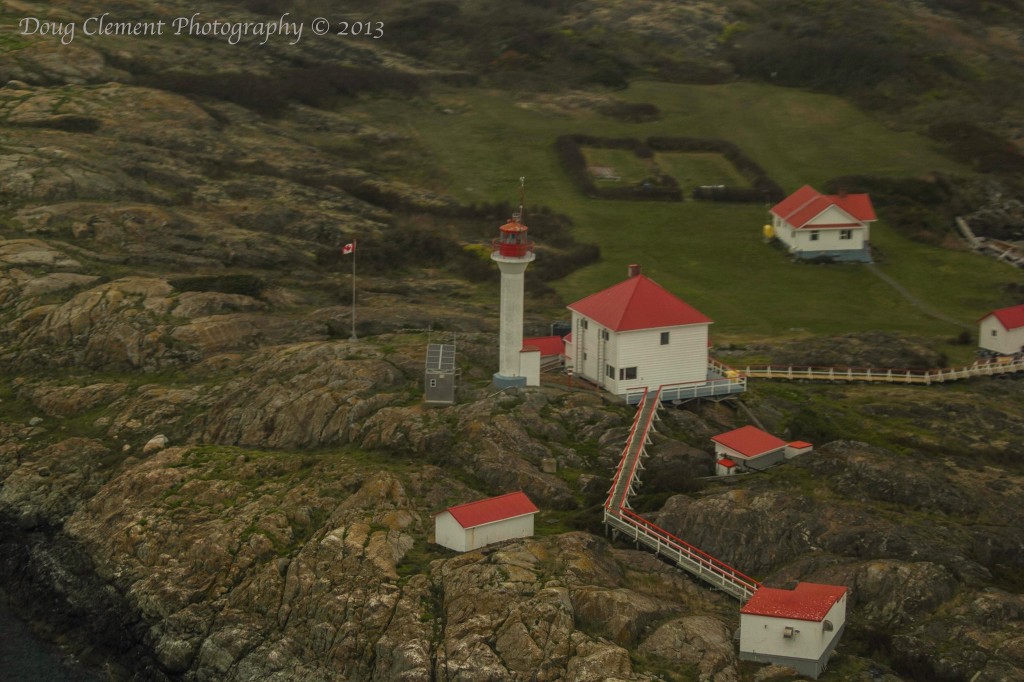

Although it is only about half a mile from Oak Bay, most people see only the radio station antennas of BC TV on a black rock be it day or night.
An interesting article on the web is Trial Island Lighthouse & VE7DQA – describing the life of a Ham Radio operator living and working there.
Trial Island is NOT an isolated station compared to West Coast Vancouver Island lightstations like Carmanah Point, Pachena Point and Cape Beale, but it is an interesting place to work.
Google Interactive Map showing the location of Trial Island.
Mise Tales Forty
For an update on what a Mise Tale is then please see Mise Tales One. As mentioned earlier on the front page of my website, any photos or cartoons, or short bits of information, when it is removed from the front page, will also be included again later in the next Misc Tales. That way you can keep track of it, search for it, or copy it.
*****************************
survival necklace s1401 from Cougar Fashion in Tahsis, British Columbia
from the rainforest, for the rainforest price $12.50 this necklace is transformed to emergency fishing gear within minutes. all you need is a pocket knife.
contents: – 3.8 m. fishing line – 3.5 cm. bait hook – interlock snap swivel – split ring – 6 cm. hoochie
Now this is a unique West Coast piece. It is a very beautiful necklace and would draw comments wherever it is worn.  I am not too sure how practical it would be with only 3.8 meters (12.5 feet) of fishing line, but anything could work in an emergency.One would be better off also wearing a Survival Strap (get one in a matching colour) to add length to the necklace. Hey, two unique pieces of survival jewelry which you can wear anytime. Check out all the other items which you can find at Cougar Fashion. Continue reading Mise Tales Forty
I am not too sure how practical it would be with only 3.8 meters (12.5 feet) of fishing line, but anything could work in an emergency.One would be better off also wearing a Survival Strap (get one in a matching colour) to add length to the necklace. Hey, two unique pieces of survival jewelry which you can wear anytime. Check out all the other items which you can find at Cougar Fashion. Continue reading Mise Tales Forty
Light at the End of the World
Light at the End of the World
Three Months on Cape St. James, 1941
by Hallvard Dahlie (orig from Raincoast 18, 1998) with notes from Jim Derham-Reid (last keeper on Cape St. James before automation)
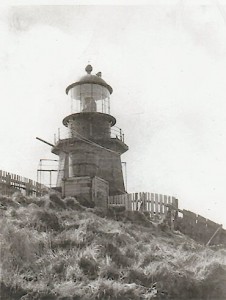 A strange interlude in my brief seafaring life took place in the fall of 1941, when I signed on as assistant lighthouse keeper at Cape St. James, a light perched on top of a three-hundred-foot rock at the very southern tip of the Queen Charlotte Islands. I had quit school earlier that year, at the age of sixteen, and found a job on the CGS Alberni, a lighthouse tender operating out of Prince Rupert. But when she had to go into dry dock at the beginning of September for a new wartime grey paint job and a bit of refurbishing, I chose to take a stint out at the lighthouse rather than scrape barnacles and paint for three months. Continue reading Light at the End of the World
A strange interlude in my brief seafaring life took place in the fall of 1941, when I signed on as assistant lighthouse keeper at Cape St. James, a light perched on top of a three-hundred-foot rock at the very southern tip of the Queen Charlotte Islands. I had quit school earlier that year, at the age of sixteen, and found a job on the CGS Alberni, a lighthouse tender operating out of Prince Rupert. But when she had to go into dry dock at the beginning of September for a new wartime grey paint job and a bit of refurbishing, I chose to take a stint out at the lighthouse rather than scrape barnacles and paint for three months. Continue reading Light at the End of the World
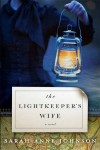
![strombolicchio-4[6]](https://ccanadaht3.com/wp-content/uploads/2014/12/strombolicchio-46-150x99.jpg)
